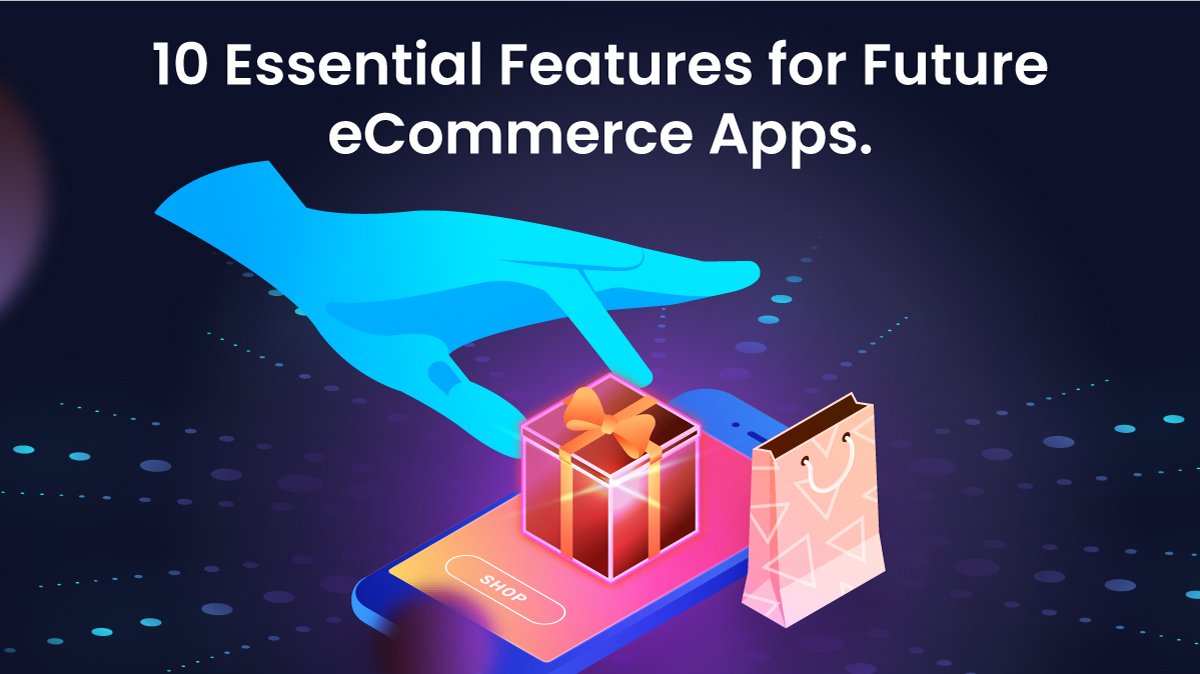
In the rapidly evolving world of eCommerce, staying ahead of the curve is crucial. To ensure your eCommerce app remains competitive, it’s important to integrate features that not only enhance the user experience but also anticipate future trends. Here are 10 essential features that can set your eCommerce app apart and keep it relevant in the years to come.
1. Livestream Shopping
Livestream shopping has revolutionized the online shopping experience. Pioneered by platforms like Instagram and YouTube during the lockdowns, this feature allows brands to showcase their products in real-time to an engaged audience. Users can view products being demonstrated live and purchase directly from the stream, with links pinned to the screen for easy access. This creates an interactive and immersive shopping experience, driving immediate purchases and enhancing customer engagement.
2. Augmented Reality (AR) Product Try-On
Augmented Reality (AR) is transforming the way customers interact with products online. By incorporating AR features into your app, users can virtually try on clothing, accessories, or even visualize furniture in their home. This technology reduces the uncertainty of online shopping, allowing customers to see how products will look and fit in real life before making a purchase. This leads to higher customer satisfaction and lower return rates.
3. Voice Search
Voice search is becoming increasingly popular, with the rise of smart assistants like Siri, Alexa, and Google Assistant. Integrating voice recognition technology into your eCommerce app allows users to search for products, navigate the app, and make purchases using voice commands. This feature not only enhances accessibility but also offers a hands-free, convenient shopping experience, catering to the growing number of users who prefer voice interaction.
4. Integration with Smart Home Devices
As smart home devices become more prevalent, integrating your eCommerce app with them can offer a seamless shopping experience. Allow users to reorder products, check delivery statuses, or even browse new items using voice commands through devices like Alexa or Google Home. This integration keeps your brand top-of-mind and makes it easier for customers to shop without having to pick up their phones.
5. User-Generated Content
Building trust in an eCommerce environment is essential, and user-generated content (UGC) is a powerful tool for achieving this. Allow customers to post reviews, ratings, and photos of products they’ve purchased. This not only provides social proof but also engages the community, encouraging more interaction with your brand. Additionally, UGC can be leveraged in marketing campaigns, showcasing real-life customer experiences to attract new buyers.
6. Multi-Language Support
In today’s global market, it’s important to cater to a diverse audience. Offering multi-language support in your app can help you reach a broader customer base. Ensure that your app is available in multiple languages and supports various currencies, making it easier for international customers to navigate and shop. This feature demonstrates inclusivity and enhances the user experience for non-English speaking customers.
7. One-Click Checkout
One-click checkout is a feature that streamlines the purchasing process, reducing cart abandonment rates. By allowing users to store their payment information securely, they can make purchases with a single click, eliminating the need for repeated data entry. This convenience is especially valuable for mobile shoppers, who often seek quick and easy transactions.
8. Geolocation-Based Deals
Leverage geolocation technology to offer users location-specific discounts, promotions, and offers from nearby physical stores. This feature not only personalizes the shopping experience but also drives foot traffic to brick-and-mortar locations. By combining online and offline shopping incentives, you can create a more integrated retail experience for your customers.
9. Social Media Integration
Social media plays a significant role in online shopping behavior. Integrating social media into your eCommerce app allows users to share their favorite products with their network, follow trends, and see what their friends are buying. This feature can increase brand visibility and drive organic traffic to your app, as users discover products through their social connections.
10. Virtual Shopping Assistant
A virtual shopping assistant can enhance the user experience by providing personalized product recommendations, answering questions, and guiding users through the shopping process. This AI-powered feature can analyze user behavior and preferences to suggest relevant products, making the shopping experience more efficient and enjoyable. By offering 24/7 assistance, you can also improve customer support and reduce the burden on human agents.
Conclusion
Incorporating these features into your eCommerce app can help you stay ahead in a competitive market. While these technologies and integrations are crucial, it’s equally important to focus on the basics: usability, security, and performance. A seamless and secure shopping experience is foundational to customer satisfaction and retention.
As you plan, consider how these features align with your brand’s goals and audience preferences. By staying innovative and customer-focused, your eCommerce app can thrive in the ever-changing digital landscape.


Scratch cards always feel like a little burst of optimism, don’t they? It’s that “what if?” moment! Heard about Axiebet88 – seems like a fun, secure platform for a bit of digital excitement. Check out the axiebet88 download for mobile access & easy gaming! Hoping for big wins for everyone! ✨